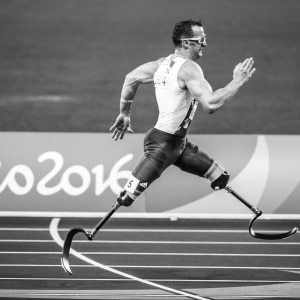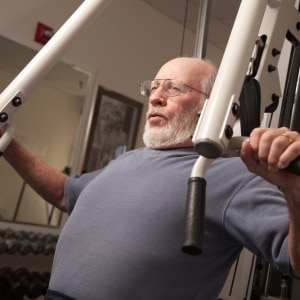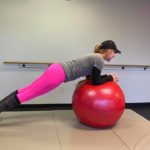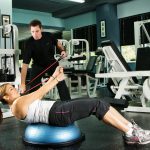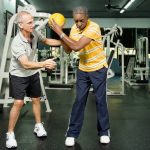
July 2019
Running Faster Doesn’t Increase Joint Load, Possibly
Most people, athletes included, think that running faster means running harder. That is, that the cumulative loads are increased by hitting the ground with more force per stride. Yet some studies have suggested that fast running, as in interval sprints, actually reduces the impact loads on the joints. While each stride may have higher forces, the total impact loads may be less due to fewer strides. It is these accumulated loads that are suspected of causing many running-related injuries.
This study attempted to calculate the loading rates of same-distance runs at self-selected ‘normal’, slow and sprint-slow speeds. The latter combined slow speeds with fast ones to average normal speed over the span of 150 meters. High speed film and force plate analyses allowed the researchers to gage the forces created and imposed on the lower legs. The participants were recreational runners, 18-49 y/o, and 29/43 were female.
As expected, fast running imposed higher forces per-step. Half-expected was that estimated cumulative load was lower while running normal speed than while doing slow-fast sprints despite average pace being equal. As such, they suggested that the “r
esults indicate that average running pace alone may not provide sufficient information on a runner’s training to infer cumulative load.”
In other words, coaches and runners should consider various aspects of volume, including speed workout just distance, when training against injury.
Furthermore, they found slow running actually increased tibial land more than fast running. This suggests that sprint and moderate training need to be recalibrated to minimize risk of injury.
MSSE June 2019
Why Run When You Could Lift?
How best to reduce your risk of cardiovascular disease (CVD) and death? For the past 50 years, most doctors and exercise professionals would tell you that cardiovascular or aerobic exercise is the best way to strengthen the heart and improve overall metabolic factors that contribute to CVD. A large multi-center study reviewed the medical records of 12,591 people who’d had at least 2 clinical evaluations between 1987 and 2006. Then, via self-reported health and lifestyle assessments, attempted to determine if there was an association between resistance exercise training (RET) and CVD and all-cause mortality.
Over a follow-up period of 5.4 – 10.5 years, there were 205 CVD events (heart attacks) and 276 all-cause deaths. Compared to having done zero RET/wk, those who’d done 1-, 2- or 3-sessions/wk or accumulated 1-59 minutes/wk of RET had a 40%-70% reduced risk of CVD events independent of their aerobic activities. However, doing 4 or more RET sessions/wk or more than 60 minutes/wk did not confer any further health benefits.
It was hypothesized that RET helps to decrease BMI, a risk factor for CVD. Furthermore, though unmentioned, only RET improves muscle mass and strength and is associated with maintaining or even increasing bone mineral density.
MSSE Mar. 2019
Tid Bits
A super-large study of 6.7 million people, reported in the journal Circulation, found that those whose weight had had multiple fluctuations had higher risk of heart and metabolic problems, including death. Those who’d fluctuated the most over the 5.5 yr period were about 2.3 times more likely to die and more than 40% more likely to have a heart attack. IDEA Fitness Journal, 06/2019
A study in the British Journal of Sports Medicine reports that interval training “may produce [weight-loss] results in a more time-efficient manner.” The meta-analysis of 77 studies compared continuous-moderate intensity (MOD), high-intensity (HIIT) and sprint-interval (SIT) training for weight loss. Subjects ranged from 10-70 yr/old and sedentary to high-level athletes. All training methods led to 3.5%-4.6% body fat loss. MOD sessions took 38 minutes vs HIIT for 28 and SIT for 18 minutes. So if you can handle the pain, boost the intensity. Takes less time, gets similar results. IDEA Fitness Journal, June 2019
Function-focused cuing works better than appearance-based cuing, especially for college-age females. A Journal of Clinical Sports Psychology study compared 203 young women separated into one of two strength-and-conditioning classes of 16-minutes. One class instructor cued with phrases that pertained to what role the exercises had in maintaining or supporting function; the other instructor talked about how the exercises made you body look. The former class participants had ‘significantly greater increase in body satisfaction and positive affect’ while the appearance-based participants tended to ‘internalize cultural messages about how they should look’ which detracts from future exercise quality and adherence. ACSM Health Fitness Journal Jan./Feb. 2019

